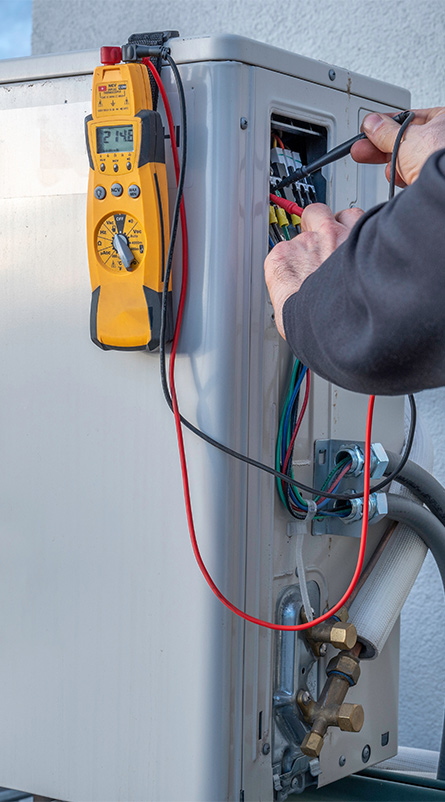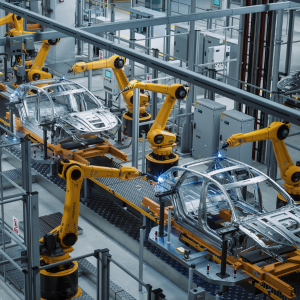What Is Predictive Maintenance?
Post By: Ryan King On: 13-12-2019 - Industry 4.0 - Industry Trends - Manufacturing
Monitoring performance in any environment is necessary, but on the factory floor it becomes an issue of far greater importance. Machines inevitably develop faults, and this can lead to knock-on effects including safety hazards, unscheduled downtime and loss of production.
In the past, performance has been monitored and measured in many aspects of production, including the effectiveness of the equipment, output rates and overall productivity. Some of these processes eventually became automated, making them faster, more efficient and more accurate. In recent years, with the rise of Industry 4.0, automation of performance tracking has seen its capabilities expand from simply monitoring – and reacting to – maintenance issues. With advanced AI and data analysis, many automated factory facilities are able to predict in advance when maintenance will be required.
What is Predictive Maintenance?
Predictive maintenance is a strategy which takes a proactive rather than a reactive approach to maintenance. Using an array of sensors, data analysis and CMMS (computerised maintenance management systems), the aim is to predict the point at which a component or item of equipment is likely to fail, in order to schedule maintenance work before such a failure occurs. A successful predictive maintenance programme should reduce unscheduled machine failures to a minimum, increasing equipment reliability and total asset uptime. It should also optimise the amount of time allocated to maintenance tasks, and thereby reduce overall operational costs. In the long run, predictive maintenance aims to maximise production hours and improve a company's bottom line, through a substantial reduction in maintenance costs.
Predictive maintenance is a dream come true for manufacturers, as new tools and technologies continually improve machine performance statistics. Long term savings will come at the cost of some initial outlay, as CMMS and sensory equipment doesn't come cheap. All equipment will need wireless-enabled sensors to produce the data on which the predictive capabilities rely, and there must be a network capable of sharing it. Some form of AI will be necessary to analyse the large amounts of data being generated, as well as the means of storing and retrieving information when necessary. CMMS are increasingly being used for these tasks, setting up and maintaining an information database of all of a company’s maintenance operations.

With such technologies, it is now possible not only to tell when an item requires maintenance, but also to determine who should carry it out. Other tasks performed in a predictive maintenance programme include:
- ordering the necessary parts
- scheduling the maintenance tasks
- ensuring that required maintenance is performed
- accounting for labour time and costs
- keeping track of inventory
Predictive maintenance is founded on condition-based monitoring equipment that can evaluate machine performance in real-time. The data diagnostics are analysed using certain predictive formulas and the IoT (Internet of Things), in order to identify areas requiring attention in the near future. To take a concrete example, let's say a machine's sensors report that an air filter will soon need replacing. The automated controller acts on this information to set in motion all the steps required to install a replacement. These include ordering the part, sending the CMMS a purchase request for it, and notifying the maintenance department to schedule its installation. In its turn, the CMMS stores this information, and uses it to perform a variety of related financial and management functions.
Predictive Maintenance Vs Preventative Maintenance
People often use the term 'predictive maintenance' to mean preventative or scheduled maintenance, but they are not at all the same thing. Preventative maintenance is based on the expected lifetime of a part and calculated averages, so it doesn’t show what is actually happening to the machine. It relies on information supplied by the equipment manufacturer, together with the personal experience of maintenance engineers who are familiar with the machine. In the past, this experience was based on physical observation of the machine's behaviour and its history, and required the machinery to be stopped in order for someone look at it. Without disassembling the equipment, preventative maintenance offers no clues as to what is actually going on with the internal workings of the machinery. Preventative maintenance is effectively based on informed guesswork.
Predictive maintenance, on the other hand, is based on hard data reflecting the real time, actual condition of a given piece of equipment. This data is gathered continuously, direct from the equipment's sensors, and studied over time. The picture it provides is based on the machine's actual performance, and is therefore much more precise. Just as importantly, it can do this while the machinery is still running, so there's no need for it to be offline until a repair is scheduled.
Sensors are many and varied, measuring different parameters according to the function and type of machine. The most common types of sensor include those for measuring pressure, noise, vibration, temperature, and fluid levels, but there are far more complex sensors available that can measure such things as corrosion and electrical currents. Collecting, processing, and analysing these data sets happens at the site of the sensor, or some local device such as a network switch, and is nowadays called 'edge analytics'. Carrying out analysis on the spot (at the “edge”) means that the results are virtually immediate; as near to real time as possible. This confers a huge advantage over data that has to be sent away somewhere for analysis. Decisions can also then be made in almost real time. This might be critical where there is a threat of equipment downtime, but it also minimises security issues by dramatically reducing communication pathways.
With IoT communication and edge analytics, automated assets can work together, exchanging information based on data analysis, and taking or recommending remedial maintenance action. Maintenance staff get a head start on scheduling, and can monitor performance on a real time basis. This enables a faster and more effective response. Predictive maintenance reduces and often eliminates errors altogether, providing solutions founded on empirical measurement. It's playing a key role in today's IoT environment, and offers immense benefits once the initial outlay is absorbed.
Get More From Rowse Straight To Your Inbox




